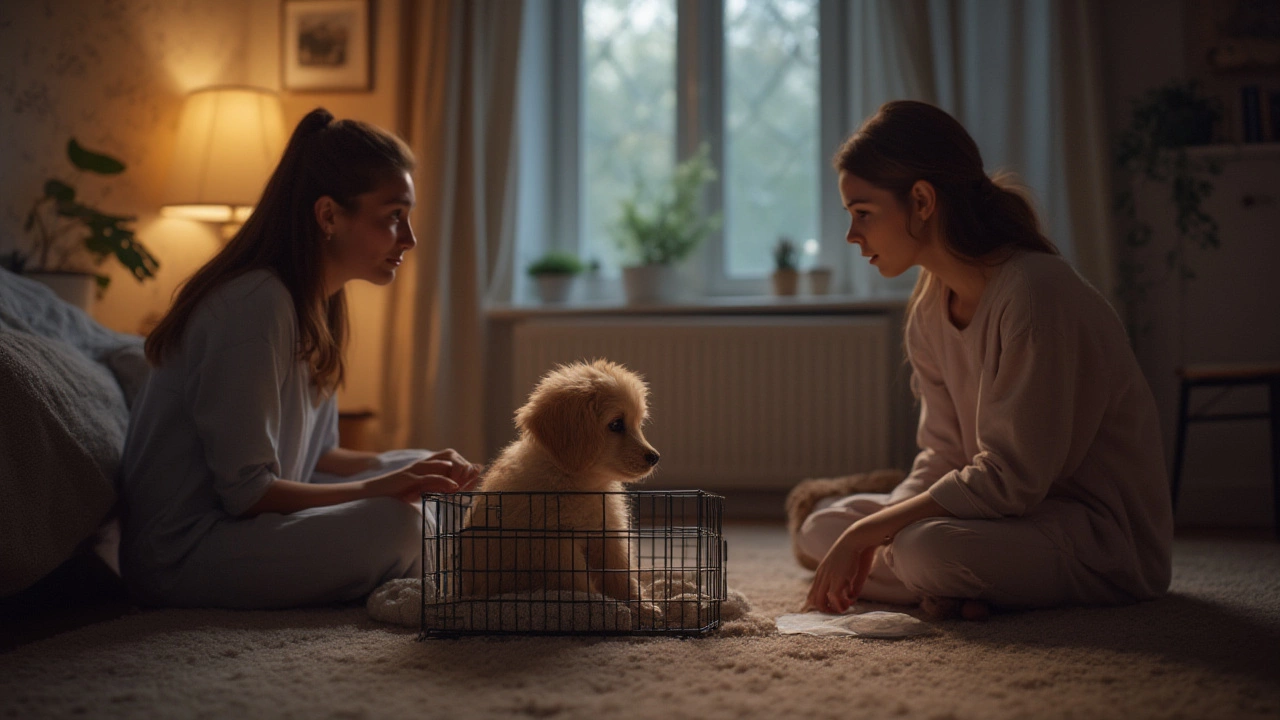Night Crate Setup: Simple Steps to a Calm, Cozy Crate
If you’ve ever wondered why your puppy whines at night, the answer often lies in how the crate feels. A well‑set‑up night crate can turn a noisy, anxious pup into a sleepy, content companion. Below are the easiest changes you can make right now, no fancy gear required.
Covering the Crate: Why and How
Most dogs instinctively look for a den‑like space. A lightweight cover creates that snug feeling and blocks sudden lights or sounds that can startle them. Choose a breathable fabric—cotton or a thin fleece works great. Drape it over the top and secure the edges with Velcro straps or a gentle tie‑back so it won’t slide off when the pup moves.
When you first add a cover, watch for signs of discomfort. If your dog paws at it or seems overly hot, switch to a lighter cloth or leave a small gap for airflow. The goal is a calm, dim environment, not a stifling box.
Bedding and Lighting for a Restful Night
A soft mattress or padded blanket adds extra comfort and reduces the hard floor feel. Opt for a washable, low‑pile material that won’t collect fur. Place the bedding at the bottom, then add a small chew‑proof toy if your pup likes to have something to grip.
Soft, amber‑colored night lights work better than bright LEDs. They keep the crate visible enough for you to check on your dog, but don’t stimulate the brain the way blue light does. A tiny plug‑in lamp or a battery‑powered night lamp placed just outside the crate does the trick.
Now that you have a covered, cushioned, dimly lit space, the next step is routine. Put the crate in a quiet corner, away from high‑traffic zones. When it’s bedtime, lead your pup into the crate with a treat, close the door gently, and stay calm yourself. Dogs pick up on our energy, so a relaxed tone helps them settle faster.
Consistency is key. Try to use the same cue—like a word or a click—and the same bedtime schedule every night. After a few evenings, most dogs start to associate the crate with sleep, not stress.
If whining continues, check for basic needs first: water, a potty break, and that the crate isn’t too cold or hot. Small adjustments—adding a second blanket, moving the crate a few inches away from a draft—can make a big difference.
Finally, remember that every dog is unique. Some love a full cover, while others prefer an open top. Experiment with one change at a time, note the reaction, and stick with what works. With a few simple tweaks, your night crate will become a safe, cozy retreat your pup looks forward to each evening.
Puppy Crate Training: Should You Use a Pee Pad at Night?
Worried if you should put a pee pad in your puppy’s crate at night? Learn practical tips, risks, and real solutions for stress-free, dry puppy sleep.
